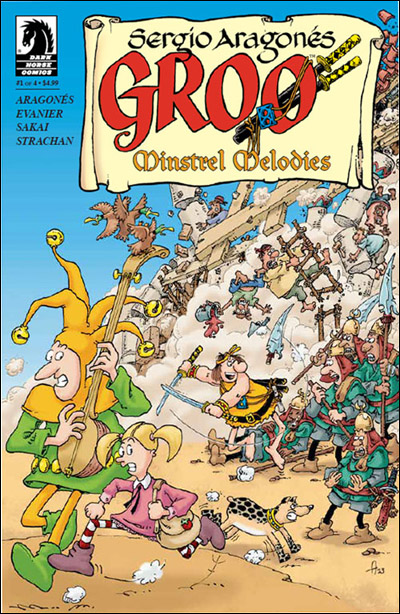Several folks have pitched in to identify the cast members from that Lampoon pilot-special that I couldn't make out. The gent after Wayland Flowers is Pat Proft, a comedian and writer who wrote on Police Academy, the Leslie Nielsen "Naked Gun" movies and a whole lot of other things. The next lady over is Joanne Jonas, who among her other credits was in the original company of Godspell on Broadway. Then we have Bo Kaprall, who was part of Second City in Chicago and who's now apparently a writer on Saturday Night Live. Then we have The Lockers (the dance group) and Adrienne Posta, who among her other film roles was in To Sir With Love. Thanks to Mike Hensel, Joby Ball and Raymond Merkh for pitching in.
I am, by the way, finally back on my main computer. It has better sound and I might have caught a few of those names if I'd been using it then.
I always feel a little sorry for folks in unsold pilots. It's always a lot of work to get into one and then be a part of it…and you can't help imagining what it will do for your career if it sells and is a huge hit. Never mind "your career," your life. People on a hit show get married or unmarried or buy new homes or pay off all their debts or get the clout to pursue other dreams or get recognized in public or…
Well, you can imagine what it would do to your world. Alas, there's no consolation prize when the show doesn't make it…and there's a saying on Broadway, "Nobody looks good in a flop." That's not always true. I know cases where the network folks have screened a pilot and said, "This stinks but that kid in the blue shirt is terrific!" Generally though, it's a real all-or-nothing crap shoot.
Changing topics: There's no real political news. You can find polls that show your candidate doing a little better than the other candidate but nothing you'll believe ensures the outcome unless you want to fib to yourself.
Kevin Drum has an interesting post up about how when Donald Trump says something blatantly untrue like the Haitian pet-eating fairy tale, his supporters are desperate to prove it's true.
And Marc A. Caputo thinks that the Trump/Vance ticket is fine with looking a bit nutcase over stories like that because it keeps the dialogue being about immigration (which they think is a winning issue for them) and off topics like abortion and employment (which isn't).
Changing again: I didn't watch the Emmy Awards but caught a few segments. John Oliver is usually so funny and so good when he accepts his annual one or two but I thought he was a bit of a dick this time. (I actually mistyped that as "a brit of a dick" and should have left it that way.) As usual, some folks are outraged that a few TV stars were left out of the "In Memoriam" segment. And as usual, absolutely no one is bothered by the omission of any recently-deceased director, writer, producer, composer, make-up person, etc. Until we show equal outrage about any of those "snubs," I refuse to care about a couple of actors not making it in.
Lastly: I keep getting questions about when Sergio Aragonés and/or I will be appearing at a convention or somewhere. Well, I'm always at Comic-Con in July and will try to make it to WonderCon next March but that's all I have planned and Sergio hasn't yet decided about either. If/when either of our plans change or firm-up, you'll read it here.




